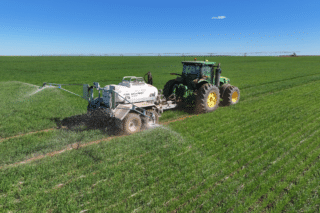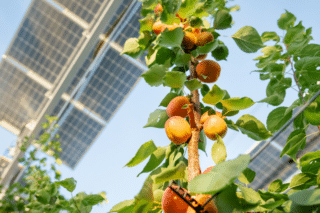Brightly colored containers to tempt the consumer, cardboard to protect machinery and special coatings to keep food fresh— industries are seeking ever-innovative eco-solutions. With the challenges of finite resources and waste disposal, packaging producers have to respond to pressure for sustainable answers.
As the European Commission proposes increases of 80% in the recycling of packaging waste by 2030 and society looks towards greener living, so packaging producers are focusing hard on finding sustainable raw materials, achieving energy-efficient manufacturing and creating end products that are biodegradable and recyclable.
Compostable Packaging
Inevitably, many are turning to biomaterials and bio-based materials. Producers of paper and cardboard packaging continue to herald their eco-credentials for their use of renewable wood fiber, but another natural solution has been to turn to food as a raw material.
Vegetable bases, including soy, are increasingly used in printing inks, and waste from food processing is being absorbed into the production of packaging. This includes starch-based void fill or loose chips to protect products and equipment during shipping.
Netherlands-headquartered PaperFoam produces bio-based packaging solutions for customers in consumer electronics, the medical industry, cosmetics and dry foods. Manufactured with patented injection molding technology, the product is more than just highly sustainable, compostable and recyclable, explains CEO Mark Geerts.
If you look at the total carbon emissions of our product, from its plant-based origins and throughout its entire life cycle, we have 90% lower carbon emissions than traditional paper or cardboard packaging. Our product is made from waste industrial starch, natural fibers, water and a premix. Very little water is used in our manufacturing process and the material is very light, which reduces carbon emissions during transport.
Eco-Packaging Gets Attractive
PaperFoam worked with the likes of Motorola and AMD on consumer electronics packaging before diversifying into packaging for other industries, where customers have included Microsoft, Philips, Medtronic, Cochlear, Veuve Clicquot and Burt’s Bees. Recent innovations include egg trays, which are designed to tempt the consumer with their vibrant design, are optimized for stacking and absorb fluid from accidental breakage.
UK-based Vegware also understands the value of attractive eco-packaging. Made from renewable materials, including corn and bagasse (sugarcane fiber), its fast food packaging is not only compostable but also appealing to the eye, says communications director Lucy Frankel.
The ideal packaging has to be practical and functional, but looks are also vital to help our clients attract consumers in a crowded marketplace. In the past, eco packaging was only available in muted tones. We want to help clients navigate other key trends too, one of which is the current craze for vivid color. That’s why we developed our Tasting Notes range.
Towards New Protein-Based Coating
Inevitably, some packaging lends itself more easily to eco-solutions than others. But behind the scenes the drive continues, even when the challenges are steep.
Dr. Elodie Bugnicourt, group leader for Eco-Materials at the Barcelona-based advanced engineering company IRIS, also coordinates the European Bio Board project. Here, a team of 14 partners is working on the development of sustainable, protein-based paper and paperboard coating systems, with the aim of increasing the recyclability of food and beverage packaging.
Some 7 million tons of coated paper, paperboard and cardboard are manufactured annually worldwide, says Dr. Bugnicourt. The standard coating material is petrochemical-based polyethylene (PE) and non-recyclable.
She points out that this means there is a need to develop polymers that are based on a sustainable resource and do not harm the environment, either in their manufacture or at the end of their life. They do, however, also require the same high performance levels as PE when employed as a coating for paper and cardboard.
It is a challenge. We are competing with materials that have been here for the last 50 years, at least. And coming up with a product that is greener just isn’t enough. It also has to be cost-competitive and processable.
But she remains optimistic. The project is making headway and Bugnicourt is confident a solution can be found.
We are working on the waste from the potato starch process and the whey that is a by-product of cheese production. We believe the new coating can be compatible with multilayer paper and board packaging and could potentially be used in the production of pouches and sachets for food, and cartons for beverage packaging.
With resources becoming scarcer and demand for packaging remaining high, sustainability will have to become the norm, she adds.












